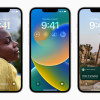How a Sprint Phone Is Born
Predicting who will win the Super Bowl in February 2014 is pretty much impossible. Even predicting which teams will make the playoffs in the 2013 season would be a challenge. Perhaps, just maybe, the best minds in all of sports would be able to select which teams might make it to the postseason a year and half ahead of time, but even then they'd probably only get a few right.
Picking cell phones that will be successful once they reach the market is somewhat similar, according to Sprint.
Sprint said that this year (2012) it will launch 58 devices. That includes feature phones, smartphones, mobile hotspots, laptop dongles, tablets, embedded devices, and other products. That averages over one launch per week, each of which takes about a year to prepare.
Selecting hardware generally starts at the Consumer Electronics Show. It is there that wireless network operators meet with their handset manufacturer partners and see the hardware maker's device roadmap and designs for the coming year. They'll look at a number of concept devices (mostly just images, rather than physical mock-ups) that are given some rough specifications and characteristics. We're talking big picture stuff: wireless radios, camera, screen, platform, and processors.
Sprint looks at five major considerations when picking devices. First, its own internal data and metrics: where the phone fits in its overall roadmap based on a number of key points. For example, looking at Sprint's selection process through the end of 2013, it wants to meet specific goals, such as offering Jelly Bean, Windows Phone 8, and BlackBerry 10 devices by late 2012 / early 2013. Or offering devices with a defined range of screen sizes within a specific time frame, such as making sure it has a "phablet" by mid 2013.
Devices have to conform with Sprint's Network Vision project and timeline, too. For example, all Sprint phones needed to support CDMA in the 800 MHz band by this year. LTE 4G devices can support just 1900 MHz this year, but starting next year all Sprint devices need to support LTE in the 800, 1900, and 2500 MHz bands, and also include HD Voice technology.
Sprint then looks at external data, hardware and software trends in the market, the hardware maker's own roadmap and scheduling, and finally positioning and leadership opportunities in the market for each and every device. A new phone may look like a winner to Sprint, but if the hardware maker can't deliver it in the right timeframe for Sprint, Sprint moves on.
These decisions aren't made lightly, and any of the factors can change at a moment's notice. In the end, Sprint assesses all the information it has and looks 12 to 18 months into the future, hoping to make it to the playoffs.







 iPhone 15 Series Goes All-In on USB-C and Dynamic Island
iPhone 15 Series Goes All-In on USB-C and Dynamic Island
 Samsung S24 Series Adds More AI, Updates the Hardware
Samsung S24 Series Adds More AI, Updates the Hardware
 iOS 16 Revamps the Lock Screen
iOS 16 Revamps the Lock Screen
 Motorola Shows Off New Concepts in AI, Foldables
Motorola Shows Off New Concepts in AI, Foldables








